Chapter: Mathematics (maths) : Fourier Series
Formula For Fourier Series
A Fourier series of a periodic function consists of a sum of sine and cosine terms. Sines and cosines are the most fundamental periodic functions.The Fourier series is named after the French Mathematician and Physicist Jacques Fourier (1768 –1830). Fourier series has its application in problems pertaining to Heat conduction, acoustics, etc. The subject matter may be divided into the following sub topics.

FORMULA FOR FOURIER SERIES
Consider a real-valued function f(x) which obeys the following conditions called
Dirichlet‟s conditions :
1. f(x) is defined in an interval (a,a+2l), and f(x+2l) = f(x) so that f(x) is a periodic function of period 2l.
2. f(x) is continuous or has only a finite number of discontinuities in the interval (a,a+2l).
3. f(x) has no or only a finite number of maxima or minima in the interval (a,a+2l).
Also, let
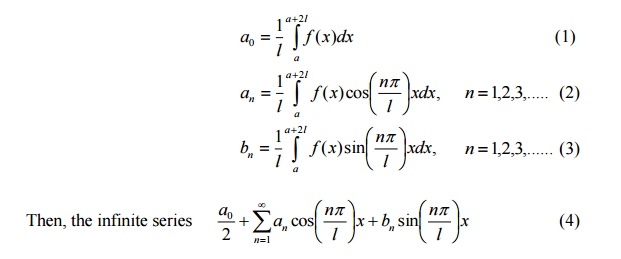
is called the Fourier series of f(x) in the interval (a,a+2l). Also, the real numbers a0, a1, a2, ….an, and b1, b2 , ….bn are called the Fourier coefficients of f(x). The formulae (1), (2) and (3) are called Euler‟s formulae.
It can be proved that the sum of the series (4) is f(x) if f(x) is continuous at x. Thus we have

Suppose f(x) is discontinuous at x, then the sum of the series (4) would

where f(x+) and f(x-) are the values of f(x) immediately to the right and to the left of f(x) respectively.
Particular Cases Case (i)
Suppose a=0. Then f(x) is defined over the interval (0,2l). Formulae (1), (2), (3) reduce to
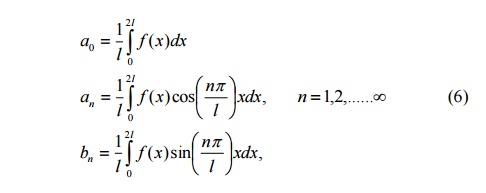
Then the right-hand side of (5) is the Fourier expansion of f(x) over the interval (0,2l).
If we set l=p, then f(x) is defined over the interval (0,2p). Formulae (6) reduce to
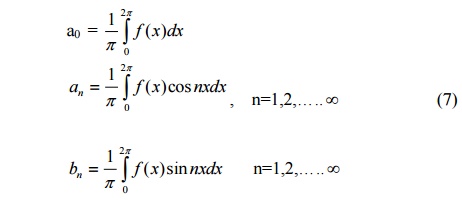
Also, in this case, (5) becomes

Case (ii)
Suppose a=-l. Then f(x) is defined over the interval (-l , l). Formulae (1), (2) (3) reduce to

Then the right-hand side of (5) is the Fourier expansion of f(x) over the interval (-l , l).
If we set l = p, then f(x) is defined over the interval (-p, p). Formulae (9) reduce to
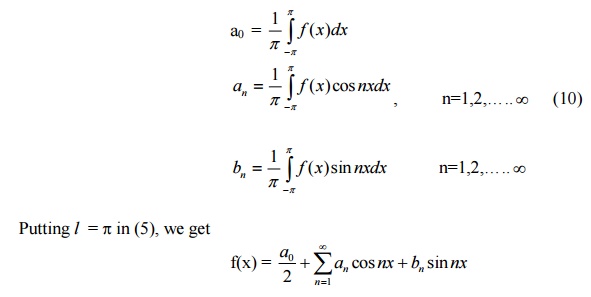
Some useful results :
1. The following rule called Bernoulli‟seful in evaluating the Fourier coefficients.
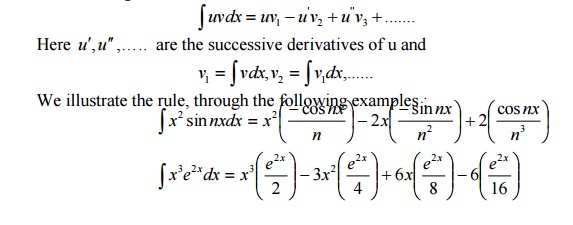
2. The following integrals are also useful :

3. If „n‟ is integer, then
sin np= 0 , cosnp= (-1)n , sin2np= 0, cos2np=1
Related Topics